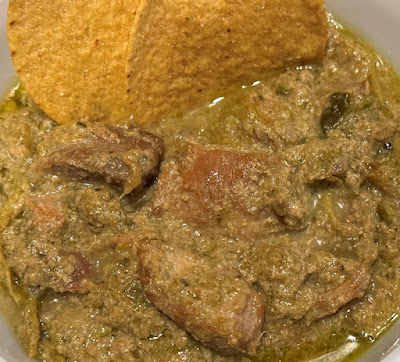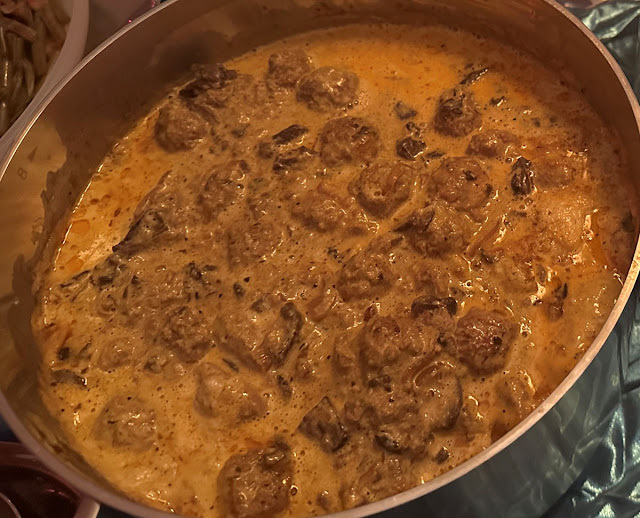Last month, I ordered some Ham Cubes from North Star Bison. They inadvertently sent me "Pork Cubes" instead of ham. I didn't have a clue how to cook them, so I asked for advice and they told me to cook them like stew.
An internet search turned up only 'Mexican' style recipes for pork "stew" so I went with that flavor profile and pulled together something CREAMY and SPICY I thought my husband would enjoy. I think you could also make this using red tomatoes instead of tomatillos, red peppers instead of poblanos, and cayenne instead of jalapeno powder.
Stew meat is generally tough so I cooked it in my pressure cooker and it was (1) ready in 45 minutes and (2) tender and delicious!
Creamy Spicy Pork Stew (or Soup) with Coconut Milk, Poblano, Tomatillo
INGREDIENTS
- 2 pounds pork cubes
- 2 cups 1/4" sliced onions (I used frozen)
- 8 poblano peppers, seeded and sliced 1/4" thick (I used frozen)
- 6 cups canned tomatillos with their juice
- 4 t. ground cumin
- 4 t. garlic powder
- 2 t. ground coriander
- 2 t. Mexican oregano
- 3-4 t. ground jalapeno powder, or to taste. This much will be HOT!
- 3 t. salt
- 1 can coconut milk, solids only
INSTRUCTIONS
Note: I used the liquid from the tomatillos to prevent the stew from burning in the pressure cooker, and then I strained most of it out before serving. The liquid is flavorful (I drank it later as "broth"), so if you prefer a more soupy consistency, leave it in and eat this from a bowl with tortilla chips crumbled over the top.
In the photo below, you can see the frozen poblano peppers (upper left corner) and frozen onions (lower right corner) along with the pork (upper right corner), tomatillos and spices:
 |
| Frozen ingredients into the pressure cooker! |
Combine everything except the coconut milk in a 6-quart pressure cooker. Bring to a simmer over medium-high heat, put the lid on, and bring to 10# pressure. Reduce heat to maintain pressure and cook for 30 minutes.
 |
| Creamy pork stew ingredients before cooking. |
Release the pressure (I let the pressure drop naturally), remove the lid, and remove the pork and vegetables to another saucepan using a strainer, leaving behind most of the cooking liquid. Over medium heat, stir in the solids from a can of coconut milk, bring to a simmer and serve. (If you use the liquid from the coconut milk it will be too soupy - you just want to make this creamy.)
We ate this rolled into tortillas with guacamole, and sour cream.
The next day, we reheated it with some of the reserved liquid and ate it like stew with chips crumbled on top. A sprinkle of chopped cilantro would be a nice addition.
 |
| Bowl of pork stew with cassava chips. |








































